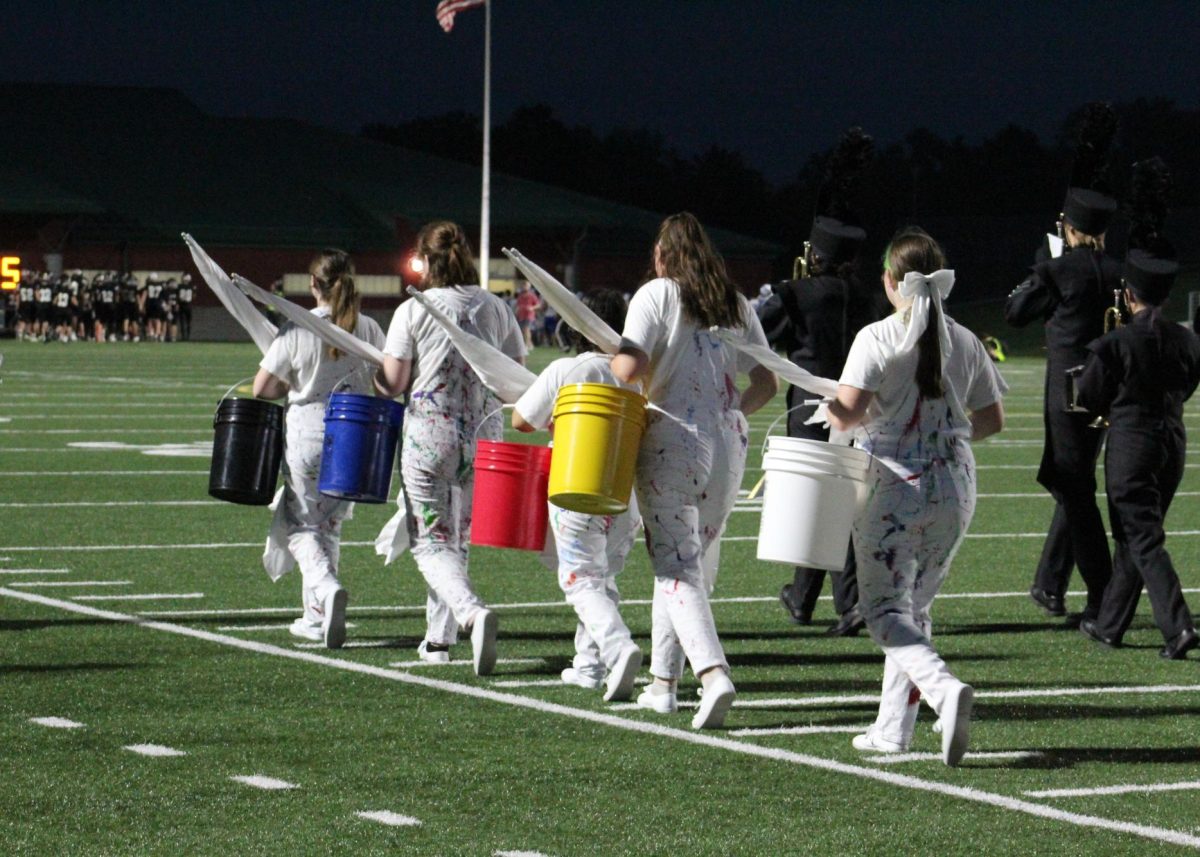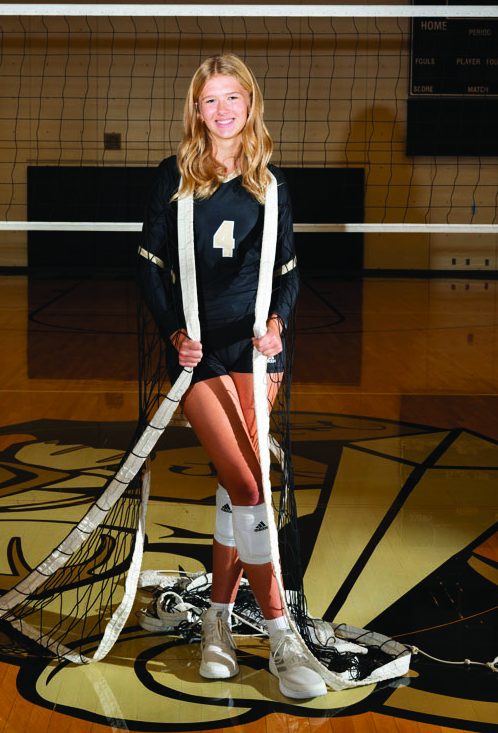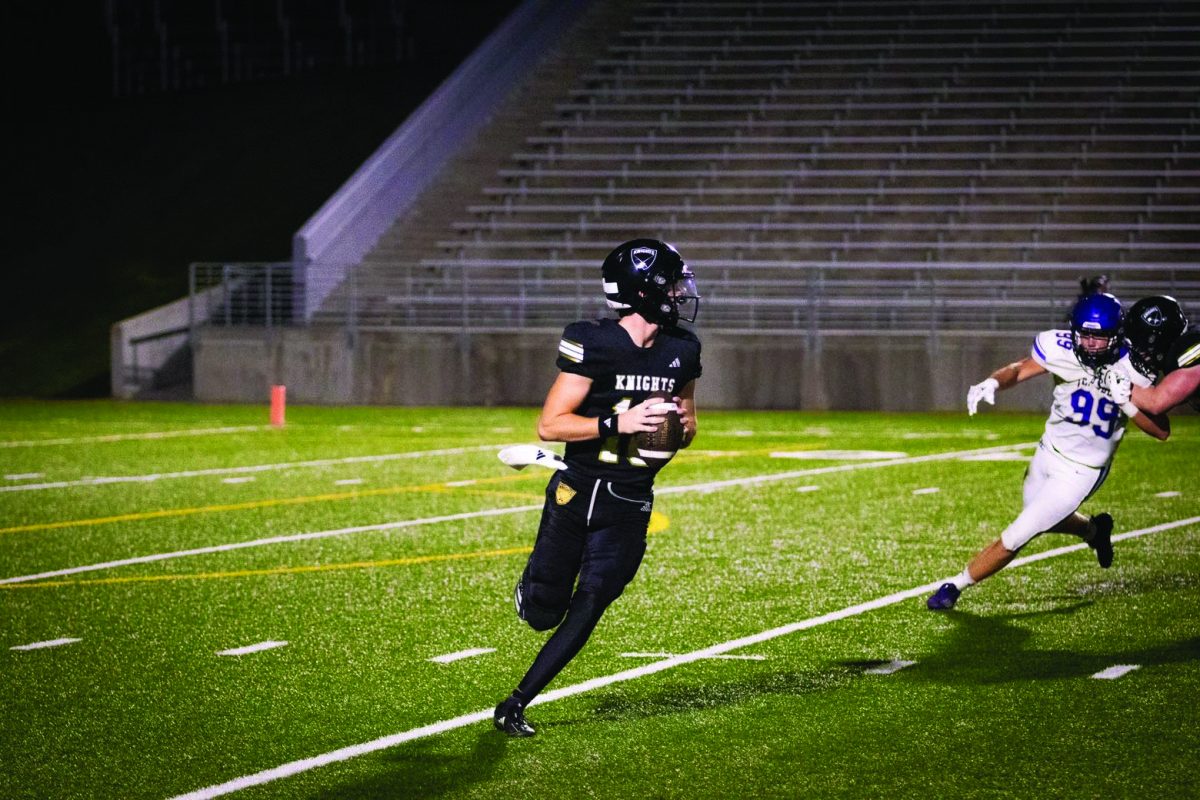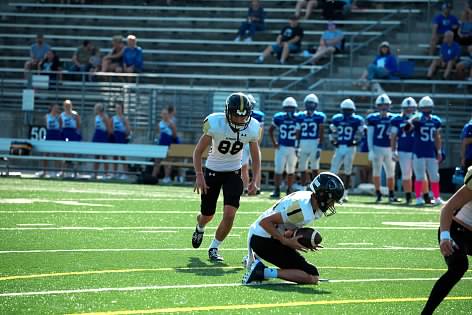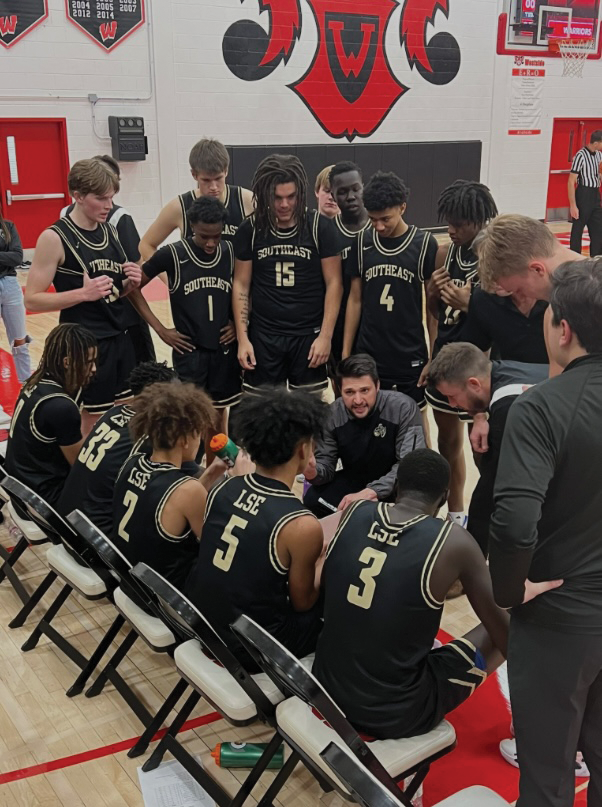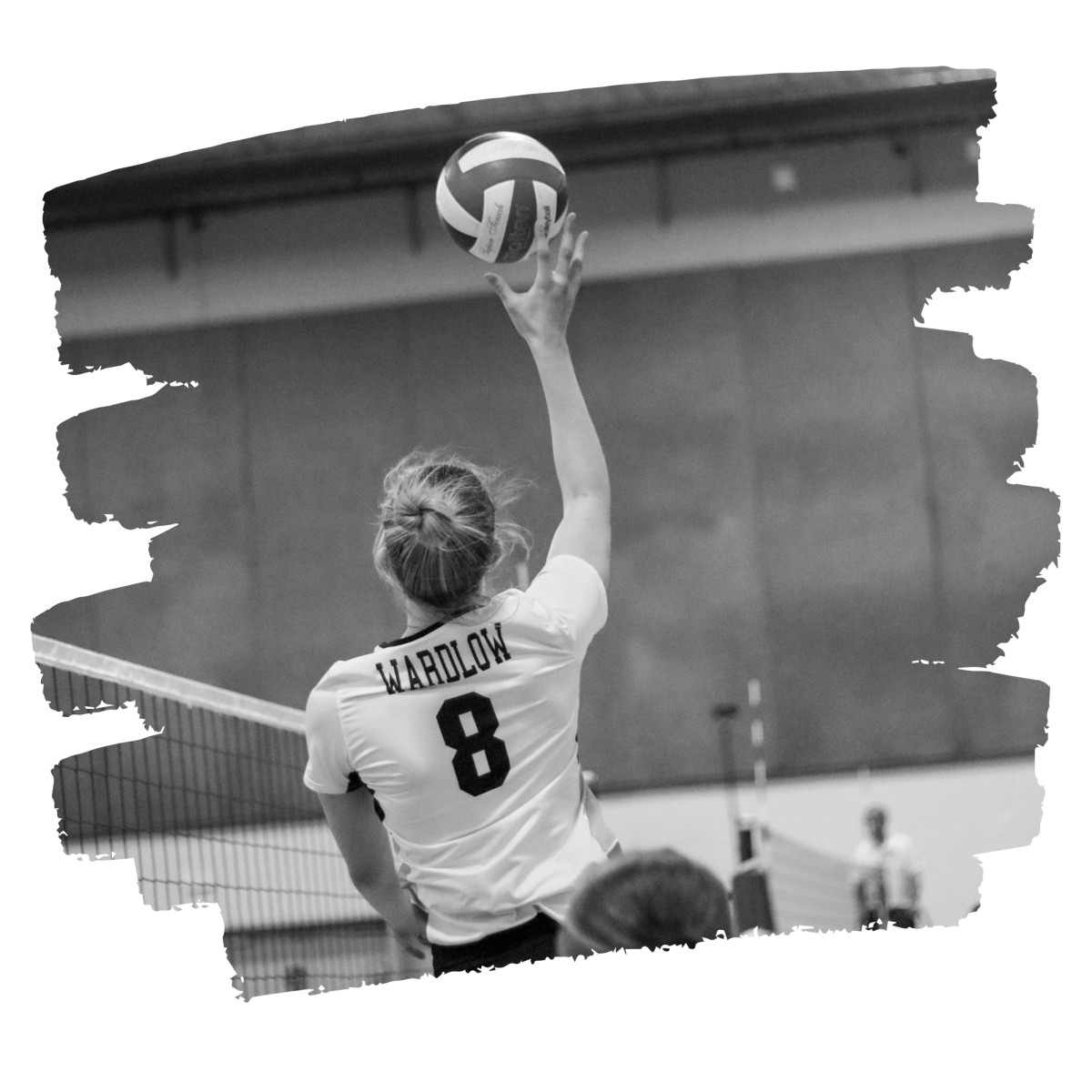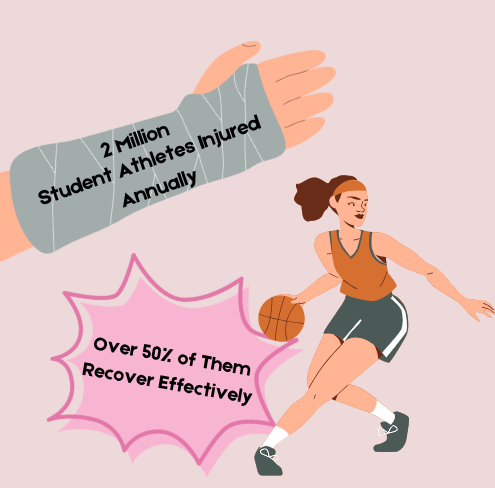
The players dribble and pass the ball strategically down the court. Sweat dripping, hearts pounding, crowd cheering. The ball travels back and forth before the star player finally secures it and shoots it high, allowing it to swish sharply down the net. She ends it all as the scoreboard reads that Southeast has won. The players jump up and down as they eagerly exchange tight hugs, and the coaches smile widely at one another. This is the typical reaction to an exciting win from the attendees and athletes. But for one player, the injured one who cheers on her fellow teammates encouragingly from the bench, the moment is bittersweet.
Every year, in every season, and in every sport, a noticeable number of young athletes become injured. In some cases it’s merely a scratch, yet in others, the unfortunate result is long-term damage. According to Advent Health, nearly 2 million high school athletes get hurt annually while participating in sports; close to 30,000 of these injuries require hospitalization. As one may imagine, becoming injured doing what you love most can be heartbreaking for a student athlete. Whether it’s a torn ACL or ligament, a broken limb, or a concussion, the news is oftentimes distressing and could have long-term consequences.
Varsity basketball player and track runner, Addison Olds (11), is one student who had a very lengthy journey with sports-initiated injuries. While participating in her athletic activities during freshman year, she tore her left ACL and meniscus, and just recently she did the same to her right leg, which has limited her greatly.
Olds believes that she will be fully recovered by next year’s basketball season, yet she doesn’t know if she’ll be able to face the possible risk of further injury.
“I will be 100% [physically healed], but I think it’s more mental, like having to go through this a second time. I would have never thought that this would happen. So I think that being about to put myself in the same position, like maybe risk being injured again, is something that I really have to think about.”
These injuries have also given athletes enlightening realizations of how passionate they are about the sports that they’re involved in, and how they’ll work very hard in order to recover effectively.
Southeast cross country runner and baseball player, Cameron Wesche (12), sprained his ankle during district baseball over the summer, and has had to cope with the consequences for both sports he’s involved in.
“[For cross country] I have to run with a brace, because our courses are so uneven that it’s very easy to reinjure it,” Wesche said. He also mentioned that right after injuring himself it was painful for him to push off the pitching mound while playing baseball.
Wesche was determined to fully recover, but that meant having to sit out of his sports on occasion, and visiting the school trainers regularly. He described how he had to partake in rehab stretching daily, before finally progressing to riding the athletic bike, then the elliptical, and eventually running on the treadmill. But for Wesche it was all worth it in order to get back to a point where he was performing his best within his sports.
“With cross country, it just made me really work hard to try and come back. Because I could have thrown in the towel and been like, ‘I’m just not going to be able to run.’ But it made me work a lot harder to try and come all the way back, like I had something to be proud of that I was able to come back and run as well as I did,” Wesche said.
These athletes are examples of how determination and proper rehabilitation can lead to a successful recovery from sports injuries. Statistics from Stanford Medicine, show that over 50% of high school athletes return to their sports after becoming injured. This demonstrates that it is possible for student athletes to overcome physical setbacks and participate once again in the sports that they love.

